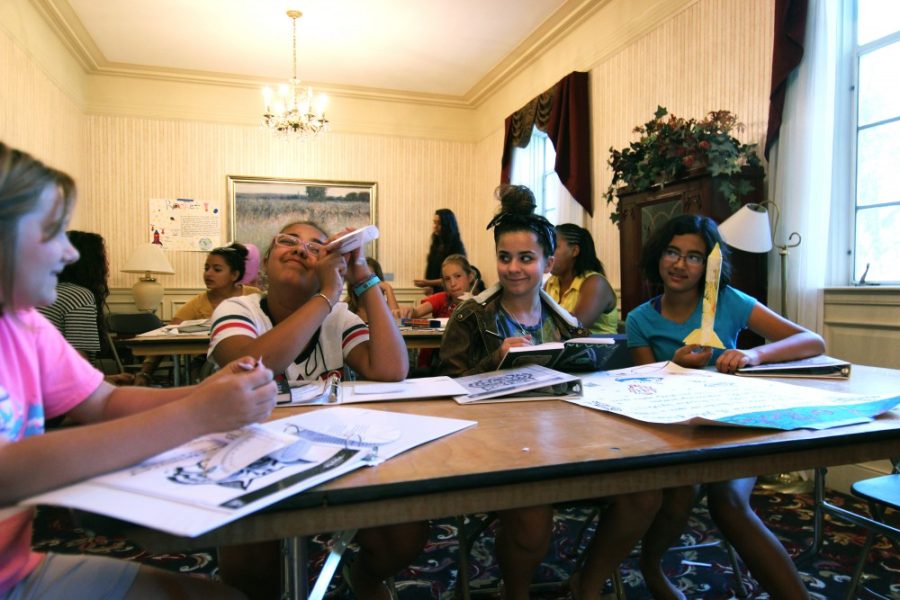It was 3:40 p.m., on a muggy July day. A slew of bottles decorated with cardboard wings and colorful drawings laid scattered on the lawn by the UA School of Dance. They were pressurized rockets bursting into the cloudy sky just moments before.
Set off on their voyage by an enthusiastic countdown, each rocket is the individual handiwork of one of the campers from Wildcat Rocketry, a camp put on by Arizona Youth University. The UA was home to a slew of science camps this summer, like this one, aimed at local students.
On the last day of the camp season, most of the kids were picked up by parents and carted back home. However, one young girl with a long braid and a lot of energy remained with the counselors, scooping water from a Styrofoam cup into the rocket, returning again and again for takeoff.
“[I’ve launched the rocket] three times now,” said Sedona, the 11-year-old camper. “There’s no dents or anything. Just some rust. I think it’s rust?”
Weeks before, Sedona was part of a program called Shoot for the Stars, an overnight camp for girls hosted at the UA.
This program was in partnership with Girl Scouts of Southern Arizona, which is a strong proponent of getting young women involved with STEM science, technology, engineering and mathematics.
Aiva Teskey, a mechanical engineering senior and the lead instructor for Shoot for the Stars, said that what gets girls interested in STEM is “mostly knowing that other girls will be there. In the other camps usually we get four or five girls, but often times they end up by themselves.”
Shoot for the Stars was girls-only and campers stayed and slept overnight on campus for three days, and worked with curriculum originally developed by NASA. The camp is designed to introduce campers to STEM-passionate women whom they can look up to and relate to.
“If all the instructors you have are old guys with mustaches and you’re a 12-year-old girl, it’s going to be hard for you to see yourself there,” said Jocelyn Gehring, a program coordinator for AYU. The new program seemed to be a success, with a total enrollment of 14 girls.
“It definitely was a positive experience,” said Joyelle Dancy, a public health senior and camp counselor. “They definitely enjoyed it.”
As Dancy, Gehring and Teskey see it, these programs are essential for giving girls an empowering identity as young women and as analytical and inventive thinkers, especially in a world that still struggles to see how much women excel in these areas.
“Looking around at the number of women [in STEM] is disheartening, especially being African-American,” said Dancy, “But it gives me courage. It makes me want to start the trend.”
Follow Alexandria Farrar on Twitter









